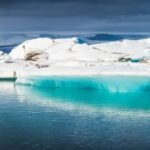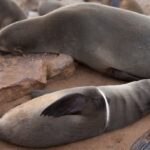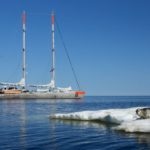Tons of plastic engulf the Arctic Ocean
It’s been around for just two or three generations, but plastic has become a pervasive part, not only of our lives but, as researcher Andrés Cózar confirmed in a study sponsored by BBVA Foundation, of our oceans, too. This includes, paradoxically, the one that washes the shores of one of the least populated places on earth: the Arctic Ocean.

According to Plastics Europe, the Association of Plastics Manufacturers of Europe, and EPRO, the European Association of Plastics Recycling and Recovery Organisations, in 2015 world production of plastic materials reached 269 million tons. Also in 2015, Spain ranked fourth among EU countries by volume of demand - a demand that has continued to grow in recent years. Europe is the world’s second largest producer of plastics, after China, and ahead of North America.
Although in 2014 more than 7.5 tons of plastic waste were collected for recycling, it is estimated that about 8 million tons end up every year as litter, in rivers and seas. There, many species are increasingly at risk of eating plastic, or getting caught or choking in it. Those species range from birds and mollusks to whales, turtles and sea lions.

Sea lion, with a plastic caught around his body.
In 2014, in a paper published in Proceedings of the National Academy of Sciences Andrés Cózar, a researcher from University of Cádiz, calculated that 90% of the oceans’ surface is already covered with plastic waste.
Now, through a recent study sponsored by BBVA Foundation and published in Science Advances, Cozar has been able to verify how the great conveyor belt that flows across earth’s oceans, the Thermohaline Current, disseminates our waste across the globe.
“The Thermohaline Current is extremely relevant from a climatological standpoint,” says Cózar. “This great conveyor displaces tremendous masses of surface and deep water, thus transporting heat from the equator and tropical regions towards the poles.” This redistribution acts as - so to speak – a planetary thermal regulation method.
“But we’re looking at, it not only from the heat redistribution standpoint, but from the standpoint of plastic debris dissemination. Warm latitudes that are populated and up until now, we knew they had the highest concentration of plastic. What this current is also doing is carrying plastic waste towards polar latitudes.”
Once they reach these latitudes, plastic starts building up in the dead end of the seas located between Greenland, Scandinavia and Russia, where Cózar estimates there could already be up to 300 billion fragments. Many of them microplastics of very few millimeters, which are extremely hard to remove.

Tara Oceans, the expedition’s cruise, during its campaign in the Artic.
Cózar’s studies are based on the data gathered during the Tara Oceans and Expedición Malaspina 2010 research program, the latter under the guidance of the Spanish Center for Scientific Research (CSIC), with support of the Spanish Navy and sponsored by BBVA Foundation. Cózar was one of the more than 400 Spanish and foreign researchers who, between December 2010 and June 2011, embarked in the Hespérides and Sarmiento de Gamboa vessels to assess the impact of global change on the world’s oceans and study the biodiversity of the deep ocean.
Cózar is the recipient of a BBVA Foundation Grant for Scientific Research Teams, which will allow him to focus his efforts in coming years to study the trends in ocean plastic pollution from 1950 to today. He will also try to calculate how it will continue to evolve over the next decade.